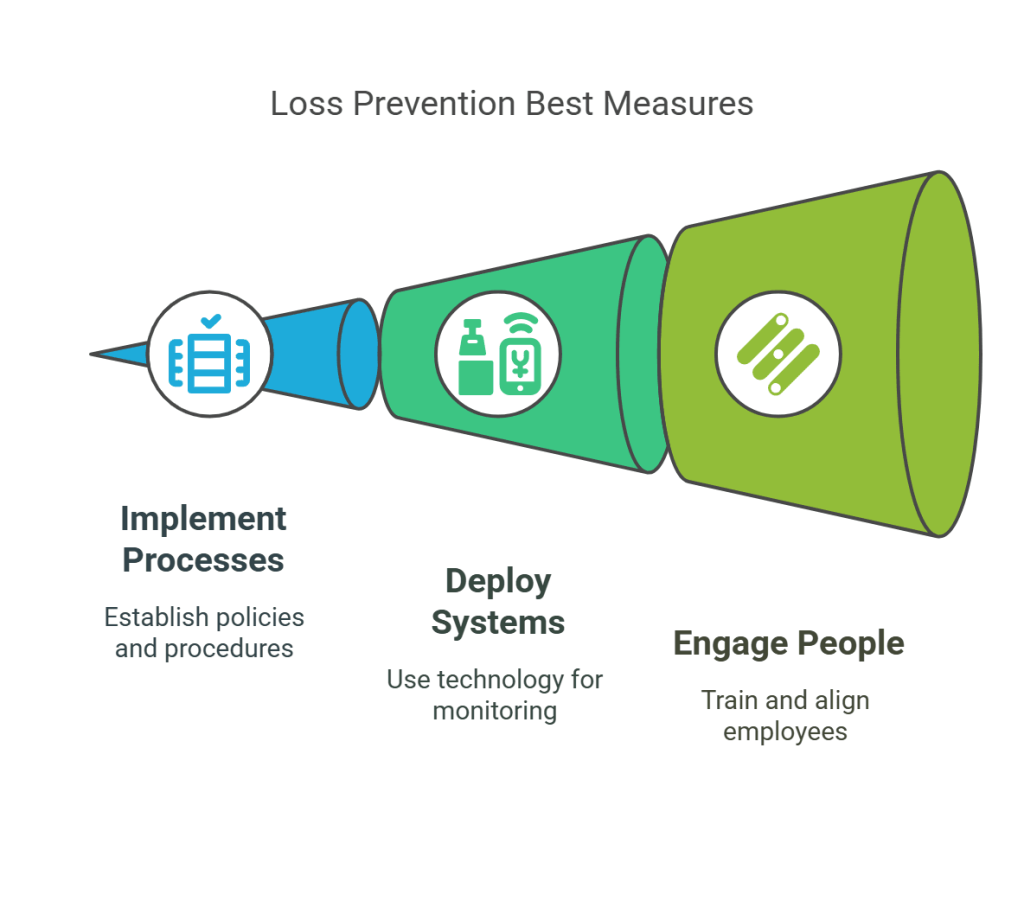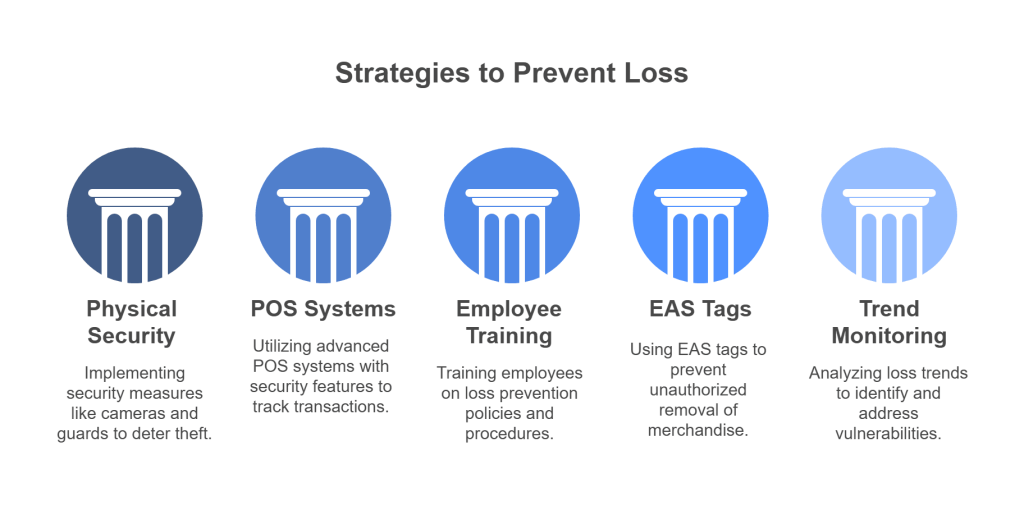
Each year, retailers and other businesses face billions of dollars in losses due to theft, inventory obsolescence, fraud, and employee errors. To combat this, companies must implement preventative measures—a collection of strategies, tools, and technologies designed to minimise issues like shoplifting, employee theft, fraud, and avoidable administrative mistakes.
In the retail sector, which often operates with narrow profit margins, reducing inventory losses is essential for safeguarding profits. Loss prevention or risk management is equally crucial for businesses in other industries, including restaurants, wholesale distribution, logistics, and healthcare.
Let’s see what it’s all about.
What is Loss Prevention?
This phenomenon is a crucial component of multiple businesses and provides several benefits, including better customer service and reduced shoplifting and inventory damage. This is a strategy or other strategies that companies use as part of an overall security management plan and work to reduce the amount of loss a company experiences.
Why is It Crucial?
This set of practices is a type of risk assessment and it aims to maximise a business enterprise’s profits. It does so by improving the management process of preventable losses. Retail shrink which is a preventable loss costs businesses a total of $46.8 billion in losses due to shoplifting, theft, error and fraudulent activities.
For that, you need adequate measures to prevent losses.
Loss Prevention Best Measures

So, to minimise loss, companies need to take proper measures that they can implement. Usually, the implementation of such measures occurs on three fronts: processes and procedures, systems and people.
1. Processes and Procedure
These are the policies and the standard procedures that you implement in operations that work together to foster an environment that prevents activities that could lead to losses.
Policies that can prevent these losses can be simple government regulations or stringent company policies. There is another form of procedure that prevents losses is the implementation of plans that lay down proactive strategies for uninterrupted business activity even during emergencies.
2. Systems and Technology
This refers to technology for monitoring and surveillance systems that businesses use to monitor operations and maintain the integrity and efficient use of resources like company assets, products and services.
They use technologies like CCTVs that track daily operations and other monitoring tools for internal audits and daily inspections.
3. People
Employees play a crucial role in loss prevention. Aligned and engaged employees enhance the effectiveness of processes and systems designed to prevent business losses. In retail and customer-facing establishments, attentive employees not only create a positive impression but also deter theft and shoplifting, reducing potential losses.
While these measures are effective, companies also need to know the right tools and methods to do so. For the best loss prevention security measures are not a one-time thing. Companies need to actively update it given their scale of operations and the risk of disasters.
Here are some tips, so your supply chain does not incur massive losses.
5 Tips to Prevent Loss
There are quite a few things that you can do to prevent the loss. Consider these tips:
1. Lead By Example
If you are in the management or are the CEO of the business, then you can lead by example. Show your employees good practices to prevent losses adhering to them at all costs.
2. Pre-Screen Applicants During Hiring
A good loss prevention measure is to practise pre-screening the applicants. Do this before you hire them. This includes conducting background checks and calling. You can also contact the applicant’s references.
If the candidate was let go from a job in the past due to behavioural or moral issues that contributed to the loss, then it would be in the best interest of the company not to hire him.
3. Use an External Accountant
Choosing to work with an external accountant can give you an objective analysis of your business’s financial records. They can also pick up on any inconsistencies with your finances that an internal accountant may have missed.
4. Double Checking all In and Out Inventory
To prevent inventory discrepancies, verify outgoing shipments against invoices and double-check incoming deliveries for accuracy. This ensures you receive what you pay for and prevents products from being unaccounted for.
5. Place Anti-Theft Signs
With anti-theft signs, you can prevent customers from shoplifting. You can craft “beware” signs that state that the costumes are under camera surveillance and if they are caught shoplifting, strict legal measures will be taken against them.
Other than these measures of loss control, you also need detailed strategies that help you plan out your course of action. Let’s see what they are:
5 Strategies to Prevent Lose

Here are a few effective strategies you can incorporate into your company to prevent losses:
1. Use Physical Security in Your Storage and Store
Proper and strategically located physical security in your warehouse or store can help you not only deter theft but also identify troublemakers. One of the most common ways companies use physical security is through security cameras. You can place these cameras in strategic locations and corners at the entrance of your warehouse or store, in the delivery and loading areas, and in all POS terminals.
You can also hire a security staff for additional physical security. Security guards can minimise the level of theft. Additionally, you can also place alert alarms on behalf of your employees and customers. This will boost the efforts to prevent loss.
2. Invest in POS Systems
A POS system or Point-of-Sale system has extra security features that prevent loss and help in management with useful information that uncovers the cause of loss if it occurs. Many POS systems with additional security features include a management interface that requires employees to log in and log out. This lets the managers know who was in there and at what time using the facilities. If theft occurs, you can check the POS system to narrow down the cause.
3. Add Training for Prevention of Loss in the Onboarding Process
Another reason that highlights the importance of loss prevention is training the new hires in the onboarding process. You can have your current employees participate in the additional loss prevention training at various intervals throughout their employment.
Instances of what to include in loss prevention training include
- what to do in particular citations in case of theft or loss
- Company policies on loss prevention and theft
- How it handles returns and defective products
4. Ensure the employees know how to operate the POS system.
EAS tags attached to merchandise trigger an alarm if someone tries to leave the store without deactivating them at checkout. This deters theft attempts by both customers and employees. Remember, EAS tags should only be removed by authorised personnel after a proper sale is recorded in the Point-of-Sale (POS) system.
5. Keep Track of Loss Trends
Regularly monitoring loss trends helps identify areas vulnerable to theft. Small losses can go unnoticed for long periods. By analysing loss data and performing audits on accounts with unusual discrepancies, you can pinpoint where and why losses are occurring, allowing you to take targeted preventive measures.
Conclusion
Loss prevention isn’t just a defensive strategy—it’s a smart, proactive business practice. Whether it’s through strong policies, modern technology, or well-trained employees, implementing effective loss prevention helps safeguard profits, reduce risk, and strengthen overall operations.
In today’s competitive and unpredictable environment, companies that prioritize loss prevention are better positioned to protect their assets, maintain trust, and ensure long-term sustainability.
Start small, stay consistent, and build a culture of awareness—because every saved rupee adds to your bottom line. Qodenext offers a comprehensive suite of tools, including real-time inventory tracking, access controls, and data analytics. We help you identify vulnerabilities, prevent threats, and achieve operational excellence.
FAQs: What is Loss Prevention: Examples and Tips
1. What industries benefit the most from loss prevention strategies?
Loss prevention is essential across various industries such as retail, logistics, hospitality, healthcare, and manufacturing—anywhere assets, inventory, or services can be lost, stolen, or misused.
2. Is loss prevention only about theft?
No. While theft is a major concern, loss prevention also covers areas like employee errors, vendor fraud, inventory mismanagement, and damage due to poor handling or environmental factors.
3. What is the difference between loss prevention and risk management?
Loss prevention focuses specifically on minimizing physical and financial losses, while risk management is broader, including legal, operational, and reputational risks.
4. How do employee training programs help in loss prevention?
Training helps employees understand procedures, recognize suspicious behavior, handle loss-related incidents correctly, and reinforces a culture of accountability.
5. Are loss prevention systems expensive to implement?
While there may be initial costs (e.g., installing CCTV, POS upgrades, hiring security staff), the long-term savings from reduced losses typically outweigh the investment.
6. How often should a business update its loss prevention strategies?
Regularly—at least annually or whenever there are major operational, staffing, or technological changes. Reviewing loss data frequently helps businesses stay proactive.
7. Can small businesses benefit from loss prevention?
Absolutely. Small businesses are often more vulnerable due to limited staff and resources. Even basic measures like inventory checks and surveillance can make a big difference.
8. How to ensure accurate inventory?
Conduct regular cycle counts. This involves physically verifying the quantity of merchandise on hand and comparing it to your records. Additionally, double-check incoming deliveries for accuracy and verify outgoing shipments against invoices.
9. What are some tech solutions for preventing loss?
Companies and supply chain authorities can use tech like RFID tags, video analytics, POS product activation, biometrics, and smart shelves to ensure that there is no theft of the product in the supply chain cycle.
10. How does the EAS system detect theft?
Electronic Article Surveillance (EAS) uses radio waves (RF) or acousto-magnetic (AM) technology. Tiny tags on the merchandise and antennas near the exit emit a signal. When an active tag passes through the field, it disrupts the signal, triggering an alarm to alert staff of a potential shoplifting attempt.






